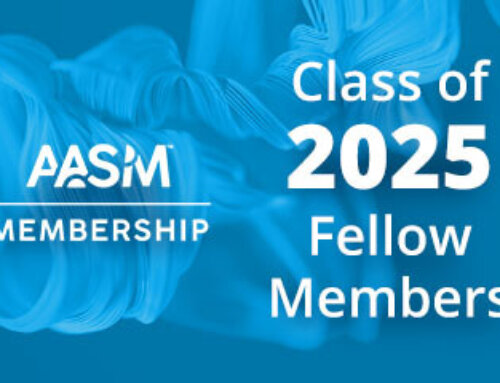FOR IMMEDIATE RELEASE
CONTACT: Lynn Celmer, 630-737-9700, ext. 9364, lcelmer@aasm.org
DARIEN, IL – A new study of obese adults is the first to show that those who have obstructive sleep apnea have a significantly larger tongue with a higher percentage of fat than obese controls. This may provide a mechanistic explanation for the relationship between obesity and sleep apnea.
Results show that obese participants with sleep apnea had significantly greater tongue volumes, tongue fat and percentage of tongue fat than obese controls without sleep apnea, after adjusting for potential confounders such as age, body mass index (BMI), gender and race. Further analysis found that tongue fat percentage in participants with sleep apnea was site specific, with increased fat toward the base of the tongue in the retroglossal region.
“This is the first study to show that fat deposits are increased in the tongue of obese patients with obstructive sleep apnea,” said principal investigator and senior author Dr. Richard J. Schwab, Professor in the Department of Medicine and co-director of the Penn Sleep Center at the University of Pennsylvania Medical Center in Philadelphia. “This work provides evidence of a novel pathogenic mechanism explaining the relationship between obstructive sleep apnea and obesity.”
Study results are published in the Oct. 1 issue of the journal Sleep.
“Tongue size is one of the physical features that should be evaluated by a physician when screening obese patients to determine their risk for obstructive sleep apnea,” said American Academy of Sleep Medicine President Dr. Timothy Morgenthaler. “Effective identification and treatment of sleep apnea is essential to optimally manage other conditions associated with this chronic disease, including high blood pressure, heart disease, Type 2 diabetes, stroke and depression.”
The study involved 90 obese adults with sleep apnea and 31 obese controls without sleep apnea. All subjects underwent high resolution upper airway magnetic resonance imaging (MRI). Sophisticated volumetric reconstruction algorithms were used to study the size and distribution of upper airway fat deposits in the tongue.
The authors proposed that in addition to enlarging the size of the tongue, increased tongue fat may impair the functioning of the muscles that attach the tongue to bone, preventing these muscles from positioning the tongue away from the airway. According to the authors, future studies should examine the effectiveness of removing tongue fat through weight loss, upper airway exercises or surgery as a potential treatment for sleep apnea.
The American Academy of Sleep Medicine reports that excess body weight is the major predisposing factor for obstructive sleep apnea (OSA). Common warning signs for sleep apnea include snoring and choking, gasping, or silent breathing pauses during sleep. The AASM and other partners in the National Healthy Sleep Awareness Project urge anyone with signs or symptoms of sleep apnea to visit www.stopsnoringpledge.org to pledge to “Stop the Snore” and talk to a doctor about sleep apnea.
Adults who have a BMI of 30 or higher are considered to be obese. According to the Centers for Disease Control and Prevention, 34.9 percent of U.S. adults – 78.6 million people – are obese, based on nationally representative survey data from 2011 – 2012.
The study was supported by funding from the National Heart, Lung, and Blood Institute (NHLBI) of the National Institutes of Health (NIH).
To request a copy of the study, “Tongue Fat and its Relationship to Obstructive Sleep Apnea,” and the commentary, “Does My Tongue Look Fat?”, or to arrange an interview with the study author or an AASM spokesperson, please contact Communications Coordinator Lynn Celmer at 630-737-9700, ext. 9364, or lcelmer@aasm.org.
The monthly, peer-reviewed, scientific journal Sleep is published online by the Associated Professional Sleep Societies LLC, a joint venture of the American Academy of Sleep Medicine and the Sleep Research Society. The AASM is a professional membership society that improves sleep health and promotes high quality patient centered care through advocacy, education, strategic research, and practice standards (www.aasm.org). A searchable directory of AASM accredited sleep centers is available at www.sleepeducation.org.




